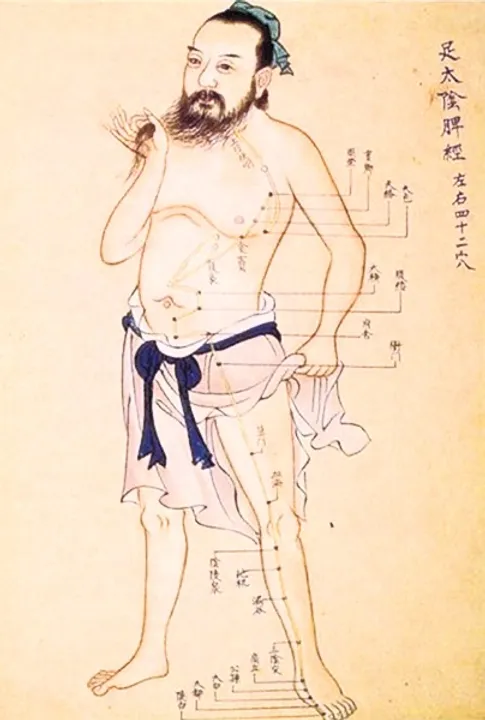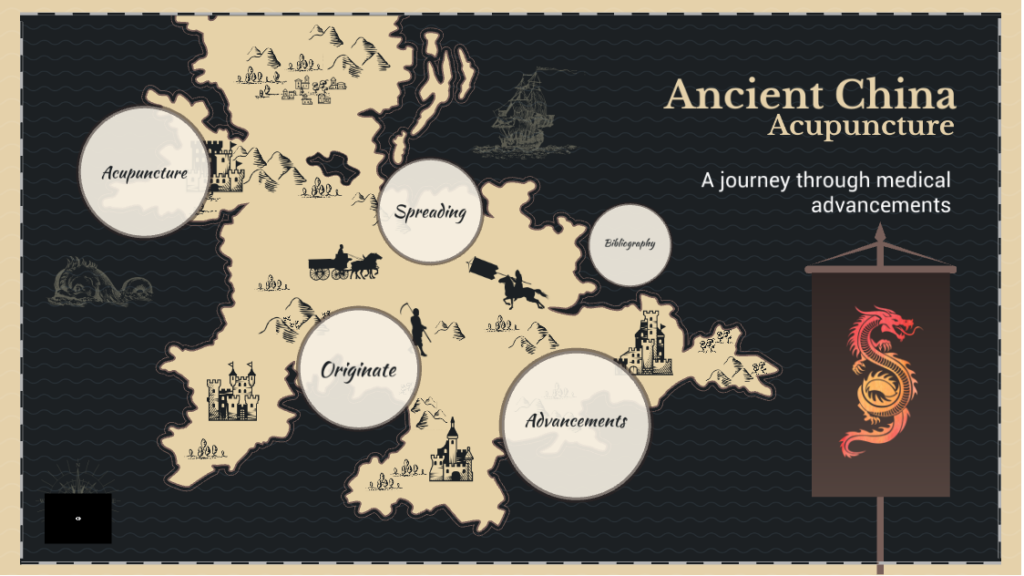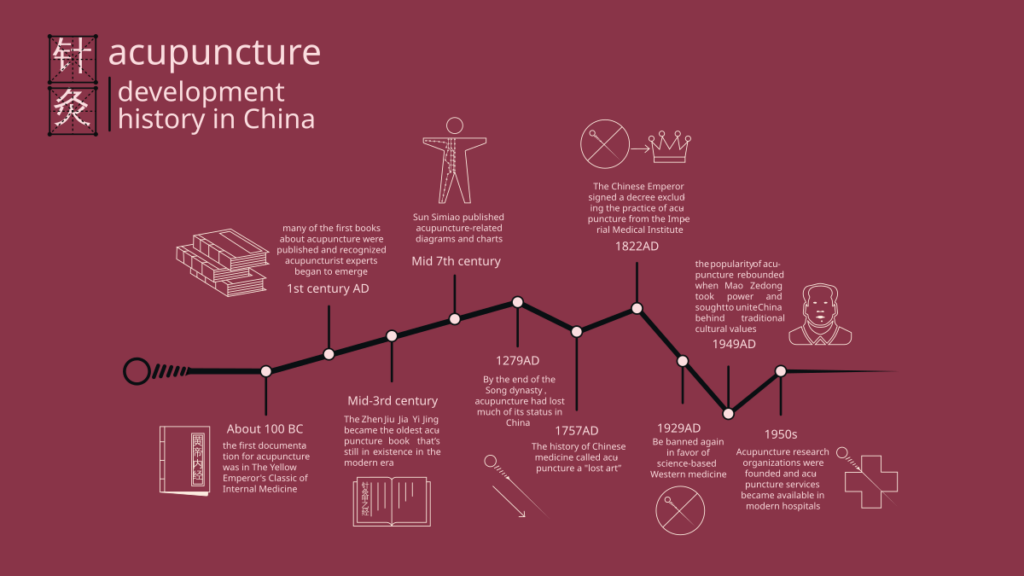
Acupuncture is a procedure rooted in traditional Chinese medicine that is both interesting and useful. Since its inception as a traditional recovery art in China, it has become an internationally accepted therapeutic method. This blog post will discuss the long history of acupuncture from ancient times to modern-day recognition.
What is Acupuncture, and What Are Its Historical Roots?
Acupuncture is an old Chinese healing practice that involves inserting thin needles into the body at specific points to promote healing and balance Qi, or energy. Its roots can be traced back more than two thousand years ago during ancient China.
Acupuncture is an important part of Traditional Chinese Medicine (TCM) which sees health as depending on the balance of qi flowing through meridians, specific pathways in our body believed to be connected with each other. It came from China where it was used to cure different sicknesses by bringing back good health through balancing energies within the body. The first mention of this treatment method appeared during the Han Dynasty (206 BC-220 AD), when various conditions were treated with it as a medical technique.
Where Did Acupuncture Originate?

Acupuncture has its roots in ancient China, where it was first recorded to have been used around 206 BCE during the Han Dynasty.
The history of acupuncture is closely connected with Chinese philosophy and medicine. The method was invented as a means of aligning the inner energies of the body thereby treating diseases by stimulating particular points on the skin. These points were believed to be associated with various internal organs and systems of the body, making acupuncture an all-encompassing approach towards health that encompasses physical, emotional, and spiritual well-being.
How Did Acupuncture Develop Over the Centuries?

Over time, different Chinese dynasties contributed to what we now know as acupuncture; for instance, during the Ming Dynasty era, there were texts such as “The Great Compendium of Acupuncture and Moxibustion” which accumulated knowledge about this field.
Acupuncture underwent significant changes in its development over the centuries. In the Tang Dynasty period, acupuncture became independent from general Chinese medical practice establishing itself as a unique branch within it; this led to increased sophistication in acupuncture techniques. By Ming Dynasty times (1368–1644), records had already been kept concerning most aspects of acupunctural treatments thus turning it into well-documented and structured medical science with clear rules for procedures according to books like “The Great Compendium of Acupuncture and Moxibustion”.
When Was Acupuncture Introduced to the West?
The twentieth century saw acupuncture spread to the West and it became more known when James Reston a journalist underwent treatment in 1971 after his surgery.
Up until the 20th century not much was known about acupuncture in the Western world but things changed quickly. It caught on like wildfire in America and Europe following James Reston’s articles about his experience with postoperative pain relief through acupuncture while being treated for that same condition during his stay in China where he had gone as part of an assignment from The New York Times – this happened in 1971. These events led to it being incorporated into Western medicine systems as complementary therapy which is still done up to now.
What Role Did the Tang Dynasty Play in Acupuncture's Development?
During the Tang Dynasty, state-run medical schools were created to help formalize and advance specialized fields including acupuncture.
Acupuncture went through major breakthroughs during the Tang dynasty (618-907 AD). This marked a time when the Tang rulers made sure everyone knew about it by setting up government-sponsored institutions like medical colleges where people could learn how to become acupuncturists among other specialties.
Such establishments played a vital role in standardizing these practices since they offered formal education which helped foster growth within different areas of expertise. This includes creating detailed anatomical charts showing locations for specific points along meridians or even coming up with new methods based on previous knowledge thus making the Chinese healthcare system stronger than ever before.
How Has Acupuncture's Popularity Changed Over Time?

The popularity of acupuncture has increased dramatically, especially in the West, where it is now considered an alternative medicine for many different ailments.
The growth in recognition that this treatment modality enjoys today can be traced back to its widespread use as a complementary therapy within Western countries. In the beginning, there were many doubts about its efficacy which led to further investigations being carried out in order to establish its credibility in terms of scientific evidence and clinical trials supportable by data.
Today, professionals throughout all corners of the globe practice acupuncture as they treat numerous disorders ranging from chronic pain syndromes to mental illnesses. This rise demonstrates how well it works and shows that people are becoming more open-minded towards other forms of healthcare outside conventional medicine systems.
Conclusion: Acupuncture's Enduring Legacy
The history of acupuncture is that it has not only survived but also adapted and been acknowledged even up to now. In the beginning, it was just one among many traditional treatment methods in ancient China. However, today it is known worldwide as a highly regarded therapeutic practice that is widely used. It doesn’t matter whether you want to try out this procedure because of its historical background or modern application; there are still many things we can learn from its great past as well as some health benefits that come with it.
Knowing about the origins and development of acupuncture may make you value such an old art while considering different uses for needles in medicine across time and place. Used alongside or by itself when dealing with sicknesses, this approach remains strong in enhancing wellness throughout cultures over the ages around the world.
